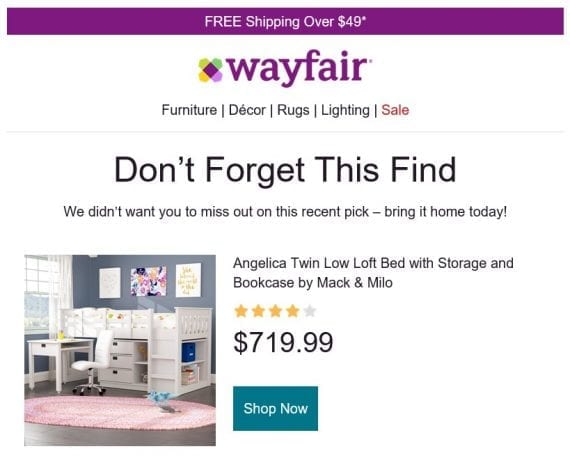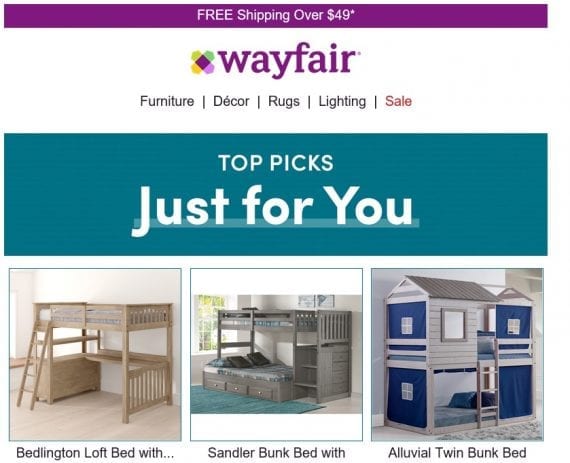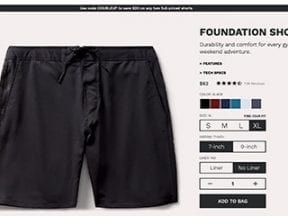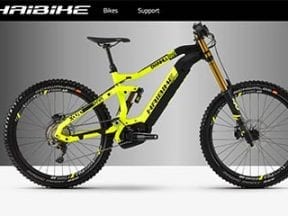Recently I logged onto Wayfair’s mobile app to shop for a bed for my daughter. I looked at lofted beds with storage as well as bunk beds. With a large selection, I spent a bit of time refining by features, price, and size. I then left the app since I was in the research stage.
Shortly after that initial visit, I received a series of personalized emails from Wayfair based on what I was shopping for.
Some of the most successful marketing emails are triggered by shoppers’ behavior. This was the case with Wayfair. Its series of emails to me is a good example of a personalized, browse-recovery campaign.
In this post, I’ll analyze the elements of the Wayfair series.
Wayfair Case Study
Subject lines. According to a study by Campaign Monitor, personalized subject lines produce a 26 percent higher open rate than non-personalized. A 2016 study by Statista found the open rate for marketing emails with a personalized message was 18.8 percent, compared to 13.1 percent without personalization. Thus a triggered email should include a personalized subject line that contains references to the featured products.
In my Wayfair experience, some of the subject lines were as follows.
- “SPOILER! Awesome KIDS BEDROOM SETS inside >>”
- “INSIDE: The kids bed you were looking for”
- “The kids beds they deserve”
- “The best KIDS BEDS around”
- “Did you hear? New KIDS BEDS are in”
Every subject line in the series included a reference to the product I was shopping for. Also, each subject line is different from the previous one. The formatting and style were different, too, with a variety of tactics to get my attention, such as posing a question: “Did you hear?”
Wayfair’s subject lines were effective. They quickly grabbed my attention and provided a reason to open.
Content. The body of the retargeting emails can be tricky to get right. But, done correctly, they can generate many clicks. I’ve seen click rates from triggered, retargeting emails of 20 percent or more.
The content of the Wayfair series varied — from the products I was looking at to general offerings of all major categories. Including products unrelated to a shopping visit can be a safe approach, as the shopper may not be interested in a specific product any longer. Other options, however, could interest her.

The content of the Wayfair series included offerings personalized to a recent browse session, such as this bed with storage.
—

The Wayfair emails also featured the entire category of a recent shopping visit, such as these beds.
—

The Wayfair email series also including general offerings from all major categories.
Frequency and timing. Perhaps the biggest challenge with a triggered, shopping-based email series is determining the right frequency and timing. Here are suggestions to help.
- Implement safeguards that stop or suppress emails to recipients that have purchased.
- The number of emails in a series should reflect the buying behavior of shoppers. If a typical buyer spends three days researching before purchasing, an email series should run three to five days.
- The more expensive a product, the longer the sales cycle. Thus use a shorter email series for less costly products and a longer series for expensive items.
- The initial email should be within 24 hours of a shopper leaving the site without purchasing.
- Most triggered emails convert from the first in the series.
In the Wayfair example, I received 17 personalized emails related to my shopping visit over three weeks. This is nearly one email per day. In hindsight, 17 emails seem overwhelming. However, at the time, amid my daily routine, the emails were not intrusive or excessive. Each reminded me that I needed to finish shopping.
Nonetheless, in general don’t send more than one email per day, and no more than 10 emails in total.
Worth the Effort
Producing a personalized, triggered email series to follow-up on shopping visits takes time and effort. It requires accessing the product data and building the email creative. It also requires an email service provider that can facilitate the program.
But the opportunity is there. According to multiple published reports, fewer than 50 percent of online retailers send personalized product recommendations via email.




